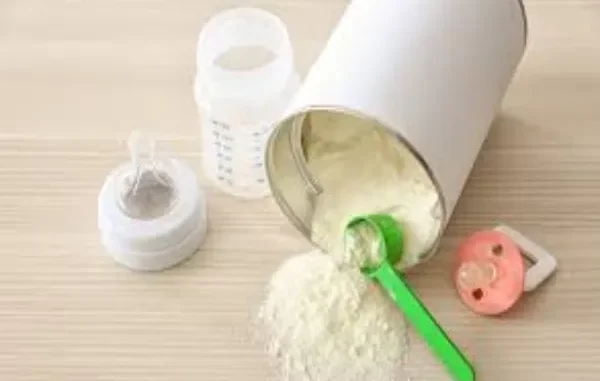

Photo by Lucy Wolski on Unsplash
Understanding the science behind hypoallergenic formulas for parents navigating infant feeding challenges can provide crucial insights into how these specialized products address allergic reactions. The effectiveness of these formulas lies in sophisticated biochemical processes that fundamentally alter the protein structures responsible for triggering immune responses.
The Science of Protein Hydrolysis
The foundation of hypoallergenic formula effectiveness is protein hydrolysis, which breaks down large protein molecules into smaller fragments. Hypoallergenic formulas are processed by enzymatic hydrolysis of different protein sources such as bovine casein/whey and soy followed by further processing such as heat treatment and/or ultrafiltration. This breakdown targets allergenic epitopes; the specific portions of proteins that the immune system recognizes as foreign invaders.
Enzymes cleave peptide bonds during hydrolysis, transforming intact proteins into smaller peptides and amino acids. The presence of β-lactoglobulin (β-LG) and α-lactalbumin (α-LA) causes allergic reactions, making their decomposition essential for creating truly hypoallergenic products. When these major milk proteins are broken down into fragments smaller than 1,000 daltons, they typically lose their ability to trigger allergic responses. Recent research demonstrates the effectiveness of this approach.
The hydrolyzed infant formula (IF) effectively prevented the allergic reaction in the model mice, providing scientific validation for the hydrolysis process across different protein sources, including both cow’s milk and goat’s milk proteins.
Partial Versus Extensive Hydrolysis
Understanding the distinction between partial and extensive hydrolysis proves critical for selecting appropriate formulas. Partial hydrolysis involves limited protein breakdown, creating larger peptide fragments that may contain some allergenic potential. These formulas work well for infants with mild sensitivities but may not provide adequate protection for those with severe allergies.
Extensive hydrolysis, conversely, breaks proteins down much further. The hydrolysates’ hydrolysis degrees with one-step (O-AD) and two-step (T-AD) methods reached 16.25% and 17.64%, respectively. This more thorough breakdown produces peptides predominantly smaller than 3,000 daltons, significantly reducing allergenic potential.
Hypoallergenic formulas with extensively hydrolyzed protein effectively treating milk protein allergy represent the gold standard for managing confirmed cow’s milk protein allergy.
The processing methods matter significantly. Advanced hydrolysis techniques employ multiple enzymatic steps, heat treatment, and ultrafiltration to achieve optimal protein breakdown while preserving nutritional value. This multi-step approach ensures consistent allergenicity reduction across production batches.
Evidence on Tolerance Development
Clinical evidence increasingly supports the role of hypoallergenic formulas in promoting immune tolerance development. The early introduction of appropriately hydrolyzed proteins may help train the developing immune system to recognize these components as safe rather than threatening. This tolerance-building effect potentially reduces long-term allergy risk.
Studies examining tolerance development reveal that extensively hydrolyzed formulas can facilitate gradual immune system adaptation. The controlled exposure to modified proteins allows the immune system to develop appropriate responses without triggering full allergic reactions. However, this process requires careful medical supervision, particularly in infants with severe allergies.
For families seeking specific examples of extensively hydrolyzed milk options, products like hypoallergenic formula HiPP HA represent the current generation of scientifically formulated solutions that demonstrate these principles in practice.
Regulatory Standards: EU versus US Approaches
The regulatory landscape for hypoallergenic formulas differs significantly between the European Union and the United States markets, shaping product claims and manufacturing standards in 2025. European baby formula manufacturers use cleaner ingredients and follow stricter regulations regarding nutrient composition, usage, and nutrients than American formulas.
European regulations mandate specific hydrolysis criteria and testing protocols for hypoallergenic claims. As of February 2020, the European standards require comprehensive allergenicity testing and minimum hydrolysis degrees for products claiming hypoallergenic properties. These standards often exceed FDA requirements, creating more stringent manufacturing protocols.
Non-FDA-registered imported European formulas do not meet all FDA-labeling requirements, highlighting the regulatory complexity parents face when choosing between domestic and imported options. These unregulated formulas haven’t undergone the safety testing, labeling review, or facility inspections required by U.S. law, creating important considerations for formula selection.
Prebiotics and Microbiome Development
Modern hypoallergenic formulas increasingly incorporate prebiotic components to support healthy gut microbiome development. Pepticate has prebiotic fibers supporting the immune system, demonstrating how current formulations address immediate allergenic concerns and long-term digestive health.
The infant microbiome is crucial in immune system development and allergy prevention. Prebiotic oligosaccharides in hypoallergenic formulas promote beneficial bacterial growth, potentially reducing future allergic sensitization risk. This dual approach, protein modification plus microbiome support, represents the current frontier in hypoallergenic formula development.
Recent advances include specific prebiotic blends that mimic breast milk oligosaccharides, supporting digestive comfort and immune system maturation. These additions transform hypoallergenic formulas from simple allergen-avoidance products into comprehensive nutrition systems supporting overall infant development.
Endnote
The science behind hypoallergenic formulas continues evolving, driven by a deeper understanding of protein chemistry, immune system development, and microbiome interactions. This scientific foundation provides confidence for parents managing infant allergies that these specialized formulas offer evidence-based solutions for complex feeding challenges.
Leave a Reply